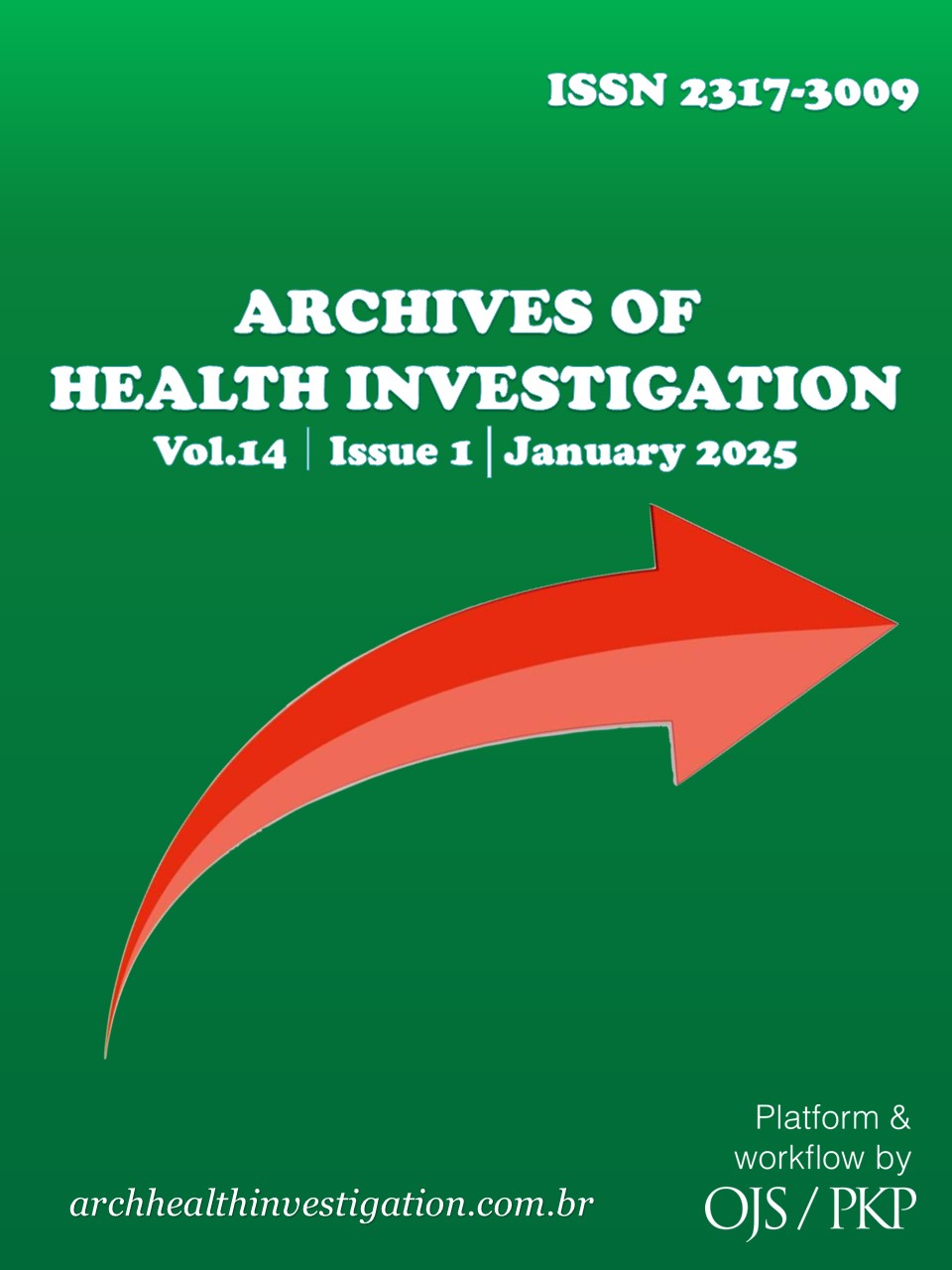Polyether-Ether-Ketone applied in Removable Partial Prosthesis Structures: an Integrative Literature Review
DOI:
https://doi.org/10.21270/archi.v14i1.6268Palavras-chave:
Removable Partial Denture, CAD-CAM, Digital TechnologyResumo
The CAD-CAM system is an option to favor the manufacture of Removable Partial Dentures (RPDs). Therefore, the objective was to review the literature in an integrative way regarding the application of Poly-ether-ether-ketone (PEEK) to manufacture structures or components for RPD. The literature search took place between May and June 2022, in Pubmed, BVS, Cochrane Library and Science Direct databases, using search strategies for articles published in any language. The terms of the search strategies were based on descriptors, synonyms, terms present in the title, abstract, Keywords. In all databases, articles were identified that could be included in the research and only 05 articles were included for data extraction and analysis, which are 01 in silico article, 02 in vitro articles and 02 in vivo articles. The review findings identify that studies on the use of PEEK in RPD are scarce. As for the adaptation factor of modified retaining clamps and higher connector accuracy, peek showed satisfactory results in relation to the conventional technique with Co-Cr Alloy structure. In addition, PEEK simulated clamps also exert less tension on the pillars compared to Co-Cr alloy clamps. So, PEEK applied to RPD structures presents itself as a promising material due to its favorable performance in terms of adaptation, precision, stress distribution and patient satisfaction. However, studies with a higher degree of scientific evidence are needed to expand the indication of this material in the daily clinic.
Downloads
Referências
Carneiro Pereira AL, Bezerra de Medeiros AK, de Sousa Santos K, Oliveira de Almeida É, Seabra Barbosa GA, da Fonte Porto Carreiro A. Accuracy of CAD-CAM systems for removable partial denture framework fabrication: A systematic review. J Prosthet Dent. 2021;125(2):241-248.
Arnold C, Hey J, Schweyen R, Setz JM. Accuracy of CAD-CAM-fabricated removable partial dentures. J Prosthet Dent. 2018;119(4):586-592.
Fueki K, Inamochi Y, Wada J, Arai Y, Takaichi A, Murakami N, Ueno T, Wakabayashi N. A systematic review of digital removable partial dentures. Part I: Clinical evidence, digital impression, and maxillomandibular relationship record. J Prosthodont Res. 2022;66(1):40-52.
Pordeus MD, Santiago Junior JF, Venante HS, Bringel da Costa RM, Chappuis Chocano AP, Porto VC. Computer-aided technology for fabricating removable partial denture frameworks: A systematic review and meta-analysis. J Prosthet Dent. 2022;128(3):331-340.
Peng TY, Ogawa Y, Akebono H, Iwaguro S, Sugeta A, Shimoe S. Finite-element analysis and optimization of the mechanical properties of polyetheretherketone (PEEK) clasps for removable partial dentures. J Prosthodont Res. 2020;64(3):250-256.
Ali Z, Baker S, Sereno N, Martin N. A Pilot Randomized Controlled Crossover Trial Comparing Early OHRQoL Outcomes of Cobalt-Chromium Versus PEEK Removable Partial Denture Frameworks. Int J Prosthodont. 2020;33(4):386-392.
Galvão IAG, Carvalho PC, Feitosa RS, Sousa EI, Grangeiro MTV, Figueiredo V. Igor Adolfo Gonçalves, et al. Propriedades biomecânicas do poli-éter-éter-cetona (PEEK) e sua aplicação na clínica odontológica: uma revisão de literatura. J Dent Public Health. 2020;11(1):67-72.
Lo Russo L, Lo Muzio E, Troiano G, Guida L. Cast-free fabrication of a digital removable partial denture with a polyetheretherketone framework. J Prosthet Dent. 2023;129(2):262-266.
Demathé A, Silva ARDS, Carli JP, Goiato MC, Miyahara GI. Odontologia baseada em evidências: otimizando a prática e a pesquisa. RFO UPF. 2012;17(1):96-100.
Tribst JPM, Dal Piva AMO, Borges ALS, Araújo RM, da Silva JMF, Bottino MA, Kleverlaan CJ, de Jager N. Effect of different materials and undercut on the removal force and stress distribution in circumferential clasps during direct retainer action in removable partial dentures. Dent Mater. 2020;36(2):179-186.
Maraka, N, Salloum A, AlMohareb M. Comparative study between removable partial dentures frameworks fabricated using PEEK and using Co-Cr alloy: clinical study. Teikyo Med J. 2021;44(6):2685-2692.
Halem A, Javaid M. Polyether ether ketone (PEEK) and its 3D printed implants applications in medical field: An overview. Clin Epidemiol Glob Health. 2019;7:571-75.
Xu X, He L, Zhu B, Li J, Li J. Advances in polymeric materials for dental applications. Polym Chem. 2017;8:807-23.
Nishiyama H, Taniguchi A, Tanaka S, Baba K. Novel fully digital workflow for removable partial denture fabrication. J Prosthodont Res. 2020;64(1):98-103.
Polychronakis N, Lagouvardos P, Polyzois G, Sykaras N, Zoidis P. Color changes of polyetheretherketone (PEEK) and polyoxymethelene (POM) denture resins on single and combined staining/cleansing action by CIELab and CIEDE2000 formulas. J Prosthodont Res. 2020;64(2):159-166.
Muhsin SA, Hatton PV, Johnson A, Sereno N, Wood DJ. Determination of Polyetheretherketone (PEEK) mechanical properties as a denture material. Saudi Dent J. 2019;31(3):382-391.


